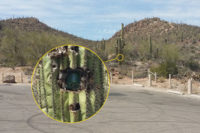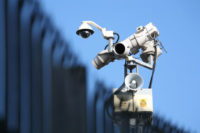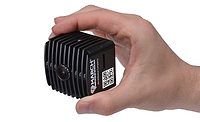There are times and situations when security executives or law enforcement need to mount a covert investigation or monitoring event that may include cameras, sometimes infrared and low light, or audio.
Not personal spy cameras or listen-in devices, which may have legal ramifications and are geared to consumers, enterprises use covert technology to protect assets and alert to intrusions. One example is an infrared camera connected to a PIR motion detector that alerts to intrusion and sends video via cellular to a monitoring service or end user.
An equipment rental business in Las Vegas, for example, has a verified covert video solution to cut theft and vandalism: Videofied from RSI Video Technologies, which combines a PIR motion sensor, digital camera and infrared illuminators for true night vision. Alerts travel by cellular to the company’s central station as 10-second video clips of incidents.
There are a lot of products available, says Jill Johnson of KJB Security, a distributor of security and surveillance products including camera and DVR sets, GPS tracking, personal computer and smart phone monitoring. “Asset tracking is important. Knowing when a vehicle stops inappropriately. It’s a matter of logging. You can have multiple tracking all on one screen. Set a geofence, and you can get an alert. It helps to create evidence.”
Diversity of Technology
Technology in vehicles and body worn are growing in use. For instance, video event data recorders (One source is Digital Ally.) is an entire video system integrated into a rear-view mirror in order to minimize space use and not interfere with the driver’s line of sight. The system easily replaces the factory mirror. The aim is fleet tracking and monitoring with software that manages video, captured by Digital Ally’s technology, among others, of incidents that require attention, such as accidents.
Another covert surveillance strategy involves social media. The Los Angeles County Sheriff’s Department, which serves more than 12 million people across 88 municipalities, complements its traditional intelligence-led policing with innovative social media techniques. The department has a 24-hour Electronic Communications Triage Unit (eComm), which focuses on high-impact social media innovation. Internet-based intelligence supports active homicides, robberies, the special victim’s bureau, gang and narcotics investigations as well as assists the department with reputation management. The eComm unit employs a variety of tools, including Geofeedia. Uniquely, Geofeedia provides social media search and discovery by location. It searches Twitter, Facebook, Instagram, YouTube, Flickr, Picasa and Viddy data by location to provide users with real-time insights from anywhere in the world.
Counter-Surveillance Programs
Then there is the need for some enterprises to guard against covert surveillance. No doubt, electronic security threats are getting smaller and harder to detect, which can present serious problems for security professionals who work to prevent information and intellectual property theft. Nonlinear junction detectors (such as Orion from Research Electronics International REI) detect and locate smaller, more advanced semiconductor circuitry, even when the target device is turned off. Such technology can sweep boardrooms, offices or meeting spaces for unauthorized or hidden recording devices or other undesirable electronics. It is also effective for searching prison cells for all types of hidden electronic contraband such as cellphones, chargers, or other prohibited electronic devices.
SIDEBAR: Responding to an Incident
No matter if covert surveillance indicates a problem or a call comes in, security officers must intelligently handle a situation.
One person facing that challenge is Robert Pavlik, director of security at Physicians for Healthy Hospitals, a coalition of local doctors in California, who are committed to creating strong, state of the art hospitals that serve as centers of medical excellence in the Hemet, San Jacinto and Menifee valleys.
“I have security officers who must move around,” he says. As part of his incident response plan, his staff is equipped with non-lethal defense devices (Pro V2 from Guardian 8) that can be used by any staff member in settings at a substantially lower risk and lower cost. “The device can calm down a situation without it even being deployed.” One of the biggest factors, Pavlik says, is audio and video review. The device can make a Bluetooth phone call to the dispatch center, too.
The device deploys via three distinct actions; arming the unit, partially pulling the trigger and fully pulling the trigger.
Placing the arming switch in the arm position simultaneously deploys the laser spotter, digital camera and incident auto record features. An audible notification occurs when the unit is armed. A partial trigger pull activates an alerting siren, strobe light and command center communication link functions and the device automatically delivers a pre-recorded alert message. A full trigger pull deploys the unit’s pepper spray or gel stream.







